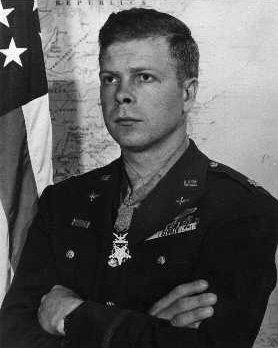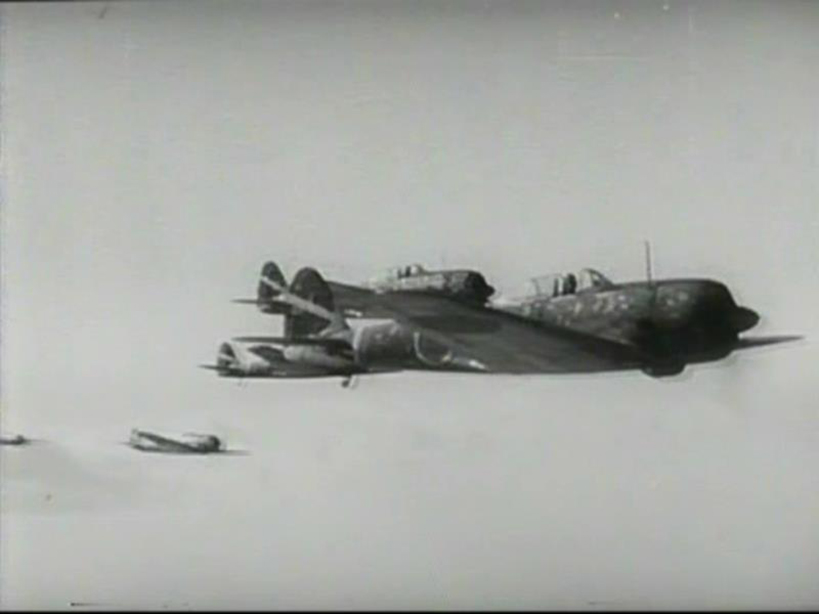Bong, Richard Ira
- Date of birth:
- September 24th, 1920 (Poplar/Wisconsin, United States)
- Date of death:
- August 6th, 1945 (Burbank/California, United States)
- Buried on:
- American War Grave Poplar Cemetery
- Nationality:
- American
Biography
Richard Ira Bong was born in 1920, in St. Mary's hospital in Superior and raised in Poplar, Wisconsin. He was the first of nine children of a Swedish immigrant father and American-born mother and was destined to have a short but illustrious career as a military aviator. Dick did well in high school, helped on the farm, and pursued many interests as a teenager. Like many boys of his age, he became interested in aviation at a young age and was an avid model builder.
He started at Superior State Teachers College in 1938, where he enrolled in the Civilian Pilot training program, also taking private flying lessons. In 1941, he enlisted in the Army Air Corps Aviation Cadet Program. After having received his wings at Luke Field, Arizona on January 9th, 1942, Lieutenant Bong spent another three months as an instructor at Luke. On May 6th, 1942 he was transferred to Hamilton Field near San Francisco, for aerial combat training in the twin-engined, twin-boom Lockheed P-38 Lightning fighter. While mastering the twin-engined craft at Hamilton Field, he attracted the attention of General George Kenney, his future mentor and commander of the 5th Air Force. When General Kenney went to the Pacific in September, 1942, Bong was one of the pilots he tapped to join the 49th Fighter Group. 2nd Lieutenant Bong was assigned to the 9th Fighter Squadron, the "Flying Knights," and was sent to Australia to "hurry up and wait." While waiting for P-38s to be delivered, Bong flew with Captain Thomas Lynch, 39th FS of the 35th FG, operating out of Port Moresby, New Guinea. There, two days after Christmas, he scored his first victories, downing a Japanese Aichi D3A Val and a Mitsubishi A6M Zero-Sen Zeke over Dobodura. By January 1943 he was an ace, his fifth victory a Nakajima Ki-43 Hayabusa Oscar over the Gulf of Huon.
By August, 1943 he was promoted to Captain. Bong's notoriety increased when, in April,1944, he recorded his 27th victory, breaking Captain Eddie Rickenbacker's World War I record of 26 victories and became "America's Ace of Aces". Along with the fame came the promotion to Major.
Bong was reassigned as an advanced gunnery instructor and observer with strict orders to avoid air combat except in self-defense. Bong "defended" himself to 30 victories by October 10th, 1944 and was grounded by Gen. Kenney, who had personally chosen Bong for combat in the first place. Bong later persuaded Kenney to allow a return to combat. By November 15th, 1944, Bong had his 36th victory prompting Kenney to recommend him for the Medal of Honor to Gen. Douglas MacArthur who, in turn, approved the citation, forwarded it to Washington, D.C. and later personally presented the Award to Maj. Bong on Dec. 12th, 1944. MacArthur threw away his prepared speech and said instead, "Major Richard Ira Bong, who has ruled the air from New Guinea to the Philippines, I now induct you into the Society of the Bravest of the Brave, the wearers of the Congressional Medal of Honor of the United States."
When Bong scored his 40th confirmed victory, he was completely relieved from combat as Gen. Kenney feared he'd never see his "hero's welcome". Bong returned home in the USA on New Year's Eve, 1944.
He married Marge Vattendahl on February 10th, 1945. After their California honeymoon, he went to work at Wright-Patterson Air Base as a test pilot, helping to develop the Lockheed P-80 Shooting Star. He studied jet propulsion theory and boned up on the engineering details of the new plane for two months, before getting a chance to fly one. After being checked out in the P-80, he flew it eleven times that summer.
On August 6th, 1945, while half a world away the Enola Gay dropped the atomic bomb on Hiroshima, Bong stepped into an airplane for the last time. His P-80 malfunctioned just after take-off, and while he bailed out, he never had a chance. He was just too close to the ground. After surviving two years of combat flying, Richard Ira Bong met his end while on a routine acceptance flight. His body, partially wrapped in the shrouds of his parachute, was found 100 feet from the plane's jet engine. On August 8th, 1945, he was burried in the Poplar cemetary, Poplar, Wisconsin.
Remarks
American Ace of Aces - Flew with various units including the 35th FG and the 8th FG, however, 21 air victories were scored with 7th and 9th FS of the 49th FG/5th AF/South West Pacific Area.
Victories: 40 destroyed, 7 probable and 11 damaged in the air.
Do you have more information about this person? Inform us!
- Period:
- Second World War (1939-1945)
- Rank:
- Captain
- Unit:
- 9th Fighter Squadron, 49th Fighter Group, 5th Air Force, U.S. Army Air Forces
- Awarded on:
- July 26th, 1943
Headquarters, U.S. Army Forces in the Far East, General Orders No. 62
- Period:
- Second World War (1939-1945)
- Rank:
- 2nd Lieutenant
- Unit:
- 39th Fighter Squadron, 35th Fighter Group, 5th Air Force, U.S. Army Air Forces
- Awarded on:
- 1943
Headquarters, U.S. Army Forces in the Far East, General Orders No. 62
- Period:
- Second World War (1939-1945)
- Rank:
- 1st Lieutenant
- Unit:
- 49th Fighter Group, 5th Air Force, U.S. Army Air Forces
- Awarded on:
- 1943
This award was obtained in the form of an Oak Leave to be attached on the ribbon of the first award. Headquarters, U.S. Army Forces in the Far East, General Orders No. 62
- Period:
- Second World War (1939-1945)
- Rank:
- Major
- Unit:
- 5th Air Force, U.S. Army Air Forces
- Awarded on:
- December 8th, 1944
- Period:
- Second World War (1939-1945)
- Rank:
- 2nd Lieutenant
- Unit:
- 39th Fighter Squadron, 35th Fighter Group, 5th Air Force, U.S. Army Air Forces
- Period:
- Second World War (1939-1945)
This award was obtained in the form of an Oak Leave to be attached on the ribbon of the first award.
- Period:
- Second World War (1939-1945)
This award was obtained in the form of an Oak Leave to be attached on the ribbon of the first award.
- Period:
- Second World War (1939-1945)
This award was obtained in the form of an Oak Leave to be attached on the ribbon of the first award.
- Period:
- Second World War (1939-1945)
This award was obtained in the form of an Oak Leave to be attached on the ribbon of the first award.
- Period:
- Second World War (1939-1945)
This award was obtained in the form of an Oak Leave to be attached on the ribbon of the first award.
- Period:
- Second World War (1939-1945)
This award was obtained in the form of an Oak Leave to be attached on the ribbon of the first award.
- Period:
- Second World War (1939-1945)
- Rank:
- Lieutenant
- Awarded on:
- January 9th, 1942
- Period:
- Second World War (1939-1945)
- Rank:
- 1st Lieutenant
- Awarded on:
- April 14th, 1943
- Period:
- Second World War (1939-1945)
This award was obtained in the form of an Oak Leave to be attached on the ribbon of the first award.
- Period:
- Second World War (1939-1945)
This award was obtained in the form of an Oak Leave to be attached on the ribbon of the first award.
- Period:
- Second World War (1939-1945)
This award was obtained in the form of an Oak Leave to be attached on the ribbon of the first award.
- Period:
- Second World War (1939-1945)
This award was obtained in the form of an Oak Leave to be attached on the ribbon of the first award.
- Period:
- Second World War (1939-1945)
This award was obtained in the form of an Oak Leave to be attached on the ribbon of the first award.
- Period:
- Second World War (1939-1945)
This award was obtained in the form of an Oak Leave to be attached on the ribbon of the first award.
- Period:
- Second World War (1939-1945)
This award was obtained in the form of an Oak Leave to be attached on the ribbon of the first award.
- Period:
- Second World War (1939-1945)
This award was obtained in the form of an Oak Leave to be attached on the ribbon of the first award.
- Period:
- Second World War (1939-1945)
This award was obtained in the form of an Oak Leave to be attached on the ribbon of the first award.
- Period:
- Second World War (1939-1945)
This award was obtained in the form of an Oak Leave to be attached on the ribbon of the first award.
- Period:
- Second World War (1939-1945)
This award was obtained in the form of an Oak Leave to be attached on the ribbon of the first award.
- Period:
- Second World War (1939-1945)
This award was obtained in the form of an Oak Leave to be attached on the ribbon of the first award.
- Period:
- Second World War (1939-1945)
This award was obtained in the form of an Oak Leave to be attached on the ribbon of the first award.
- Period:
- Second World War (1939-1945)
This award was obtained in the form of an Oak Leave to be attached on the ribbon of the first award.
- Period:
- Second World War (1939-1945)
- Period:
- Second World War (1939-1945)
- Period:
- Second World War (1939-1945)
- Period:
- Second World War (1939-1945)
- Period:
- Second World War (1939-1945)
Sources
- Photo: USAAF
- - Bongheritagecenter.org
- Acepilots.com
- Warbirdsresourcegroup.org















